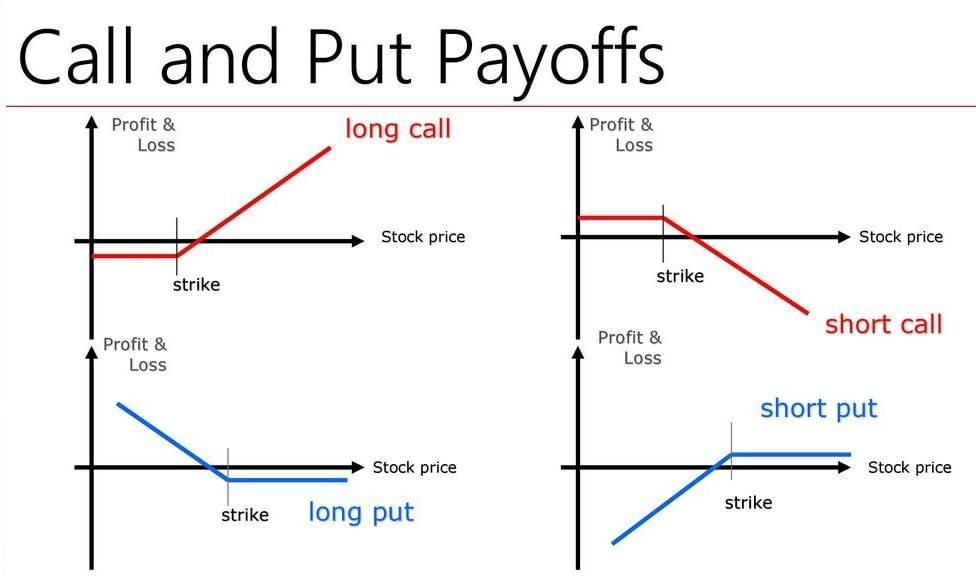Introduction
In the realm of financial investments, options trading emerges as a multifaceted domain that can empower investors with the potential for substantial returns. Among the array of options strategies, buying calls holds a prominent position, offering a powerful tool for capitalizing on market momentum and profiting from upward price movements. Delving into the intricacies of options trading buy calls unveils a world of opportunities and sophisticated financial techniques.

Image: libertex.com
Understanding Options Trading Buy Calls
Options, in essence, are financial contracts that grant the buyer (the contract holder) the right, not an obligation, to buy or sell an underlying asset at a specified price on or before a predetermined date. These contracts derive their value from the underlying asset, such as stocks, bonds, or commodities, and provide investors with the flexibility to tailor their investment strategies to market conditions.
Buying a call option confers upon the investor the right to buy the underlying asset at a specified price, known as the strike price. In return for this right, the investor pays a premium to the seller of the contract. If the underlying asset’s price rises above the strike price, the investor can exercise the option, securing a profit.
Advantages of Buying Call Options
The appeal of options trading buy calls stems from several key advantages that distinguish them within the financial landscape:
-
Leverage: Calls offer a potent form of leverage, allowing investors to control a substantial number of underlying shares with a relatively smaller capital outlay. This magnifies the potential returns, albeit accompanied by amplified risks.
-
Profit potential: When the market aligns favorably, call options can generate significant profits. As the underlying asset appreciates in value, the call option’s value escalates, potentially yielding substantial returns.
-
Flexibility: Calls provide flexibility in tailoring investment strategies. Investors can select strike prices and expiration dates that align with their market outlook, fine-tuning their options positions to capture specific market movements.
Factors Influencing Call Option Prices
The pricing of call options is influenced by a complex interplay of factors, each contributing to determining the premium investors pay:
-
Underlying asset price: The most direct influence on call option prices is the underlying asset’s current market value. As the underlying asset’s price rises, so too does the value of call options.
-
Strike price: The strike price plays a crucial role in determining call option prices. Options with lower strike prices are typically more expensive than those with higher strike prices, as they confer the right to buy the underlying asset at a more favorable price.
-
Time to expiration: As the expiration date of an option approaches, its time value decays, resulting in a decline in its price. Options with longer time to expiration command higher premiums due to the greater potential for the underlying asset to appreciate in value.
-
Volatility: Market volatility significantly impacts call option pricing. Options on volatile underlying assets often trade at higher premiums, reflecting the increased uncertainty in the asset’s future price movements.

Image: speedtrader.com
Risk Considerations
While the allure of potential profits may beckon, it is imperative to acknowledge the inherent risks associated with options trading buy calls:
-
Limited profit potential: Unlike buying the underlying asset directly, the profit potential of call options is capped at the difference between the strike price and the underlying asset’s price at expiration, minus the premium paid.
-
Time decay: As the expiration date nears, the time value of call options erodes, potentially diminishing their value even if the underlying asset’s price holds steady.
-
Unlimited loss potential: Contrary to buying the underlying asset directly, buying call options exposes investors to the possibility of losing the entire premium paid, regardless of the underlying asset’s price movements.
Options Trading Buy Calls

Image: blog.achievable.me
Conclusion
Embarking on the journey of options trading buy calls requires a comprehensive understanding of the inherent opportunities and risks. By wielding these contracts strategically, investors can potentially harness the power of leverage and profit from upward market movements. However, it is prudent to approach options trading with prudence, meticulously assessing risk tolerance and investing only with capital designated for sophisticated financial instruments.






